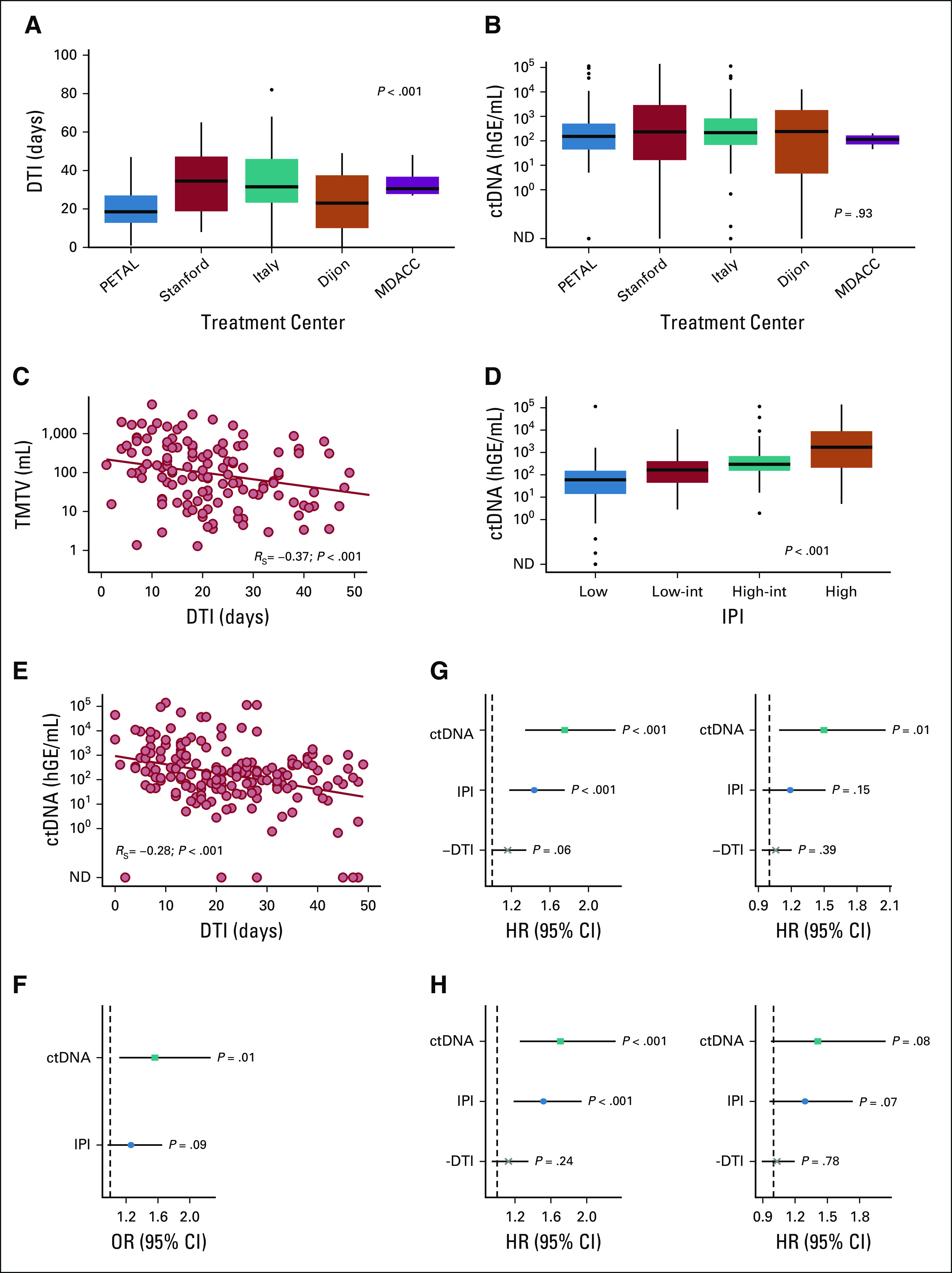FIG 5.

DTI, ctDNA, and their impact on EFS and OS in patients with de novo DLBCL treated with R-CHOP. (A) DTI and (B) pretreatment ctDNA levels across treatment centers. (C) DTI by TMTV. (D) Pretreatment ctDNA levels by IPI. (E) Pretreatment ctDNA levels by DTI as continuous variable. (F) Multivariable logistic regression to predict short DTI (≤ 14 days). (G) (Left) Univariable and (right) multivariable Cox regression to predict EFS. (H) (Left) Univariable and (right) multivariable Cox regression to predict OS. P values of categorical comparisons are derived from one-way ANOVA on ranks. Spearman correlation was used to assess the association between continuous variables. For regression analyses, ctDNA was used in log space, IPI as score ranging from 0 to 5, and DTI per week increment. One hundred eighty-five patients with de novo DLBCL treated with R-CHOP were included in all analyses not including TMTV, whereas TMTV was evaluable in a subset of 132 patients. ANOVA, analysis of variance; ctDNA, circulating tumor-derived DNA; DLBCL, diffuse large B-cell lymphoma; DTI, diagnosis-to-treatment interval; EFS, event-free survival; hGE, haploid genome equivalents; HR, hazard ratio; IPI, International Prognostic Index; ND, not detected; OR, odds ratio; OS, overall survival; R-CHOP, rituximab plus cyclophosphamide, adriamycin, vincristine, and prednisone; TMTV, total metabolic tumor volume.
